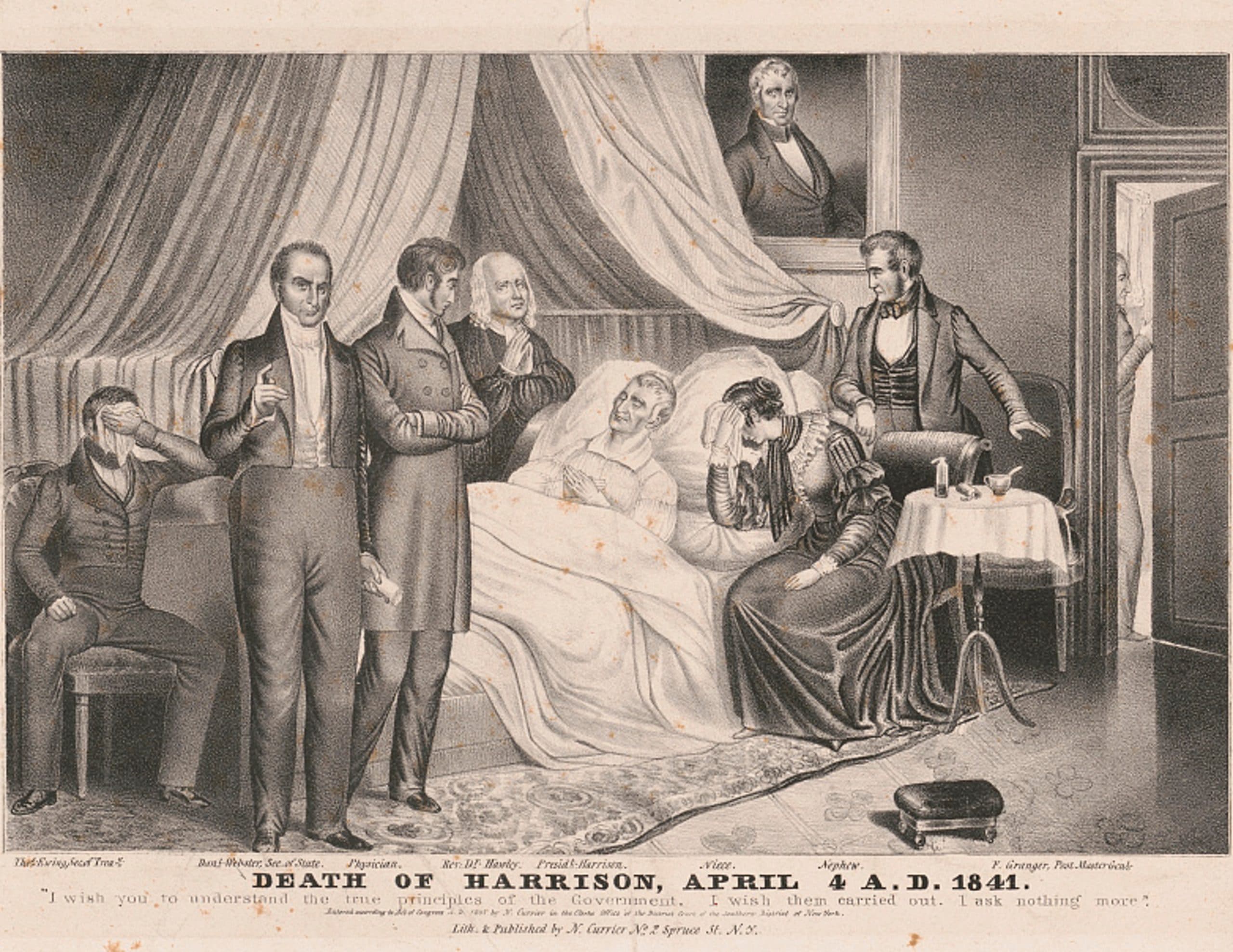
John Tyler and Presidential Succession
The Constitution specifies very little about presidential succession. The death of President William Henry Harrison set in motion events that established a precedent observed for more than a century.
Issue
In 1841, President William Henry Harrison died only 31 days into his term and was the first president to die in office. His vice president, John Tyler, insisted that he was now president and thus had the authority of the presidency. When Tyler met with Harrison’s cabinet, Secretary of State Daniel Webster proposed that the cabinet would vote on administrative issues together until the next presidential election. Rather than having the final say on decisions as President Harrison had, Tyler would have one vote like the rest of the cabinet members. Tyler quickly rejected this idea and fully assumed the powers and title of the president. Despite reservations from politicians who did not think he had the legal authority to become president, both houses in Congress passed legislation designating John Tyler as the president of the United States.
Causes
Although the Constitution stated that the powers of the presidency devolved to the vice president in times when the president was unfit or unable to serve, it left open to interpretation questions about the presidential line of succession. Government officials needed to decide whether and to what extent Tyler would serve as president, for the rest of Harrison’s term or until the country held a special election. While some officials interpreted the Constitution to mean that the vice president can exercise full presidential powers if the president is unable to serve, others interpreted it to mean that the vice president is not given the full powers of the president and is only delegated to the role of acting president until the next election can be held. Confusion over who could be called president was resolved by John Tyler, who adamantly pushed the latter definition wherein he became the president of the United States.
Outcome
President John Tyler’s insistence on assuming all presidential powers set an important precedent for the presidential line of succession. Since then, seven other vice presidents have assumed the title of president after the elected president died in office. After the assassination of President John F. Kennedy in 1963 and with the escalation of the Cold War, the states realized the importance of codifying the presidential line of succession. In 1967, they ratified the 25th Amendment. This amendment dictates that the vice president assumes the title of president if the elected president is no longer in office due to death, resignation, or removal. It also states that a transfer of power should occur if the president is injured, ill, senile, or suffers from any other grave affliction. The passage of this amendment codified the precedent set by President John Tyler, eliminating any similar questions about the presidential line of succession in the future.
Feature Image: The death of President William Henry Harrison, April 4, 1941 (Library of Congress, LC-DIG-pga-08564)

